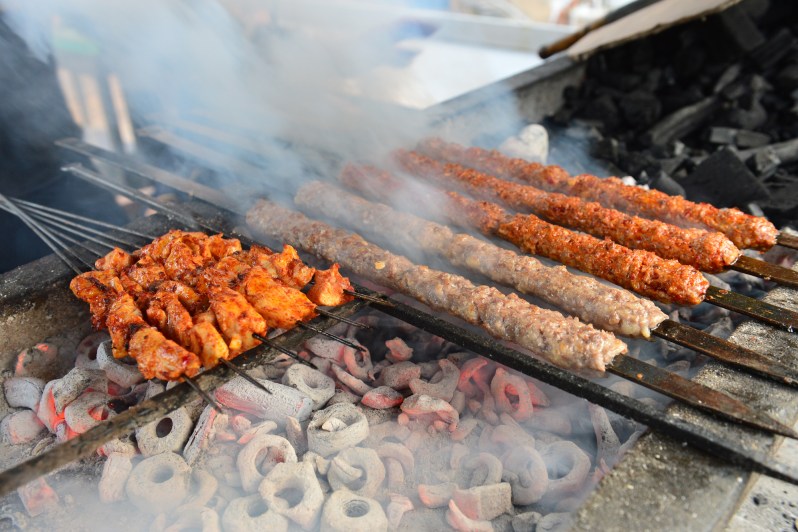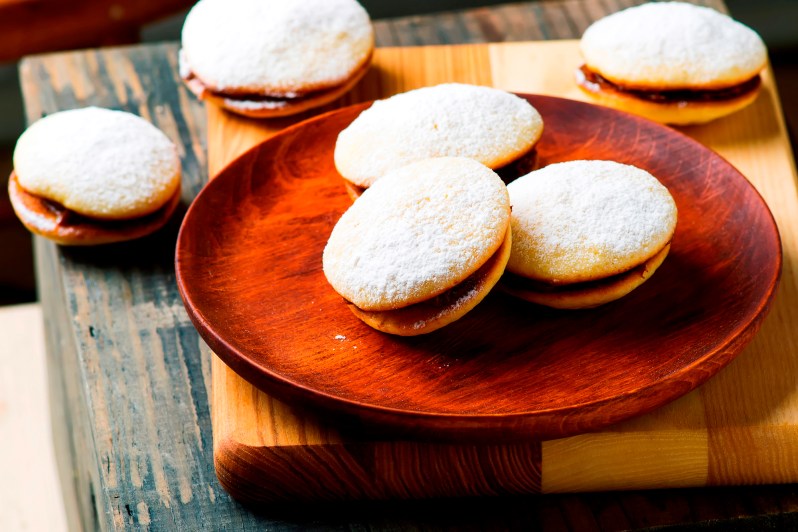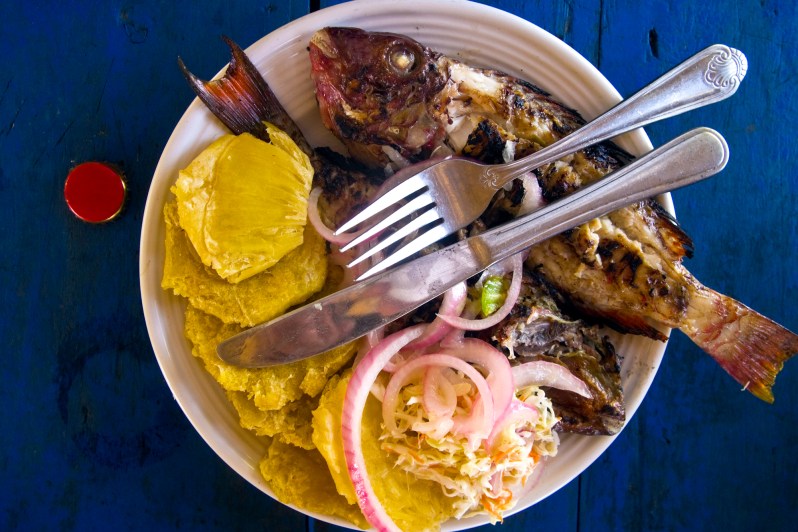From Italian to Indian to Japanese to French to Mexican, international influences are and always have been a major force in the development of American cuisine. At the same time, “American cuisine” can feel like a pretty reductive term, considering the diverse and hyper-local dishes and dining traditions present in smaller regions of the U.S.
As the digital age continues to expand and globalize our culture, American diners regularly prove their interest in encountering and trying out culinary traditions from around the world, venturing past their “usual” foreign cuisine picks and sampling less-familiar dishes in an effort to expand their palates and discover new favorites. When it comes to international and regional dishes expected to grow in popularity over the course of 2020 and in the years to follow, chefs and restaurateurs who participated in this year’s South Beach Wine and Food Festival named a few that adventurous eaters would be wise to watch.
Persian Cuisine

Middle Eastern restaurants had a big presence in the dining landscape of the 2010s, but dishes unique to the nation of Iran — also known as Persian cuisine — didn’t appear on as many menus as one might expect. Miami restaurateur David Foulquier of Fooq’s seeks to change that at his eatery, which specializes in a hybrid of Persian, French, and Mediterranean flavors. “Persian food might be one of the most beloved [cuisines] out there. Whenever people talk about having Persian food at their friend’s mom’s house or something like that, they’ll say ‘Oh, I loved it, it was so good! The crispy rice, the yellow chicken …’ It has positive associations for people, especially in terms of kebabs. I’ve been seeing a lot of high-end kebab places opening up around the country, but most people don’t realize that the best kebabs are Persian kebabs. There’s a place in London that does really well with [Persian-style kebabs] right now. Persian food is generally just very accessible. It can be made into fast-casual [dishes] really easily — there are a lot of Middle Eastern ‘bowl’ spots that are heavily influenced by Persian food. It’s just never been a dining culture that translates especially well to restaurants; [Persian dishes] can be sloppy-looking and not necessarily tight in terms of presentation. It’s loose and fluid — lots of liquids and stews and murky colors. [At Fooq’s], we work to make the dishes pretty by adding more color — red pomegranate seeds, bright green mint, and cilantro. It’s a very herbaceous and beautiful cuisine, when you’re willing to hone in on that. Persian culture is also super hospitality-based. If you grow up in a Persian household, you’ll always have tons of people over [for events and holidays], and there will be food for days. It’s a very festive culture, so it would be great to see more festive Persian-style restaurants rather than old-guard, traditional, not-so-exciting Persian places that are out there,” Foulquier tells us.
Sub-Regional Latin-American Cuisines
Dishes and cooking styles from Latin countries have established themselves as major forces in the American restaurant scene, but according to chef, cookbook author, and TV host Jet Tila, 2020 will see a rise in Latinx cuisine as it’s interpreted by specific American regions. “I think regional Latin cuisines from Latin-American cooks and chefs will be more popular. [Think] LA Mexican, Texas Mexican [or Tex-Mex], Florida Cuban, NY-Queens Puerto Rican, and other similar [cuisines],” Tila tells us.
Peruvian Cuisine
South American fare from nations like Brazil, Venezuela, and Argentina finds itself well-represented in major U.S. cities, but the unique flavors native to the mountain country of Peru haven’t yet garnered the same level of popularity. However, chef Giorgio Rapicavoli of Grove Bay Hospitality Group’s Glass and Vine in Miami sees abundant opportunities for that to change in the near future. “I would love to see more Peruvian flavors capture the American audience. The tastes of Peru are absolutely fantastic and delicious. There are so many cultures [represented] in that country, [so] you get hints of Italy, China, Japan, and Latin America, all in one!” he explains.

“Peruvian cuisine is so diverse,” owner and head baker Ingrid Herrera of T’antay Miami, who originally hails from Peru, also claims. “You have the coast, which is a desert, then you have the mountains, then you have the jungles, which [feature] food more similar to the rest of South America. Peru has been awarded the Best Cuisine in the World several years in a row, and [Peru has some of] the best coffee, chocolate, ground beef … there’s just so much that you can play with when it comes to Peruvian food.” In terms of specific Peruvian pastries that Herrera likes to share with her clientele, she especially recommends “alfajores … they’re Peruvian sherbet cookies filled with dulce de leche and made with dried potato flour. This is something that they do in the Andes — they dehydrate the potatoes and turn them into a powder, which we then use in these cookies.”
Haitian-Creole Cuisine
When we hear the term “Creole,” many American foodies immediately think of the cuisines developed in and around the Louisiana bayou area, which can famously be found throughout the rich culinary scene of New Orleans. However, Creole cultures aren’t exclusive to that region, and numerous Caribbean nations have their own methods of manifesting Creole flavors. Chef and YouTube host Natacha Supplice Henry of icancook2 especially believes that the Creole cuisine of her native Haiti deserves wider recognition. “If you’ve never tasted [Haitian-Creole food], then you don’t know what you’re missing. But if you taste something, you’ll be curious to try more. That’s why, at every food festival [I attend], I showcase Haitian food. Creole [cuisine] is Caribbean cuisine, but it also has a global reach. It’s super spicy at times, and it has a lot of flavor and color. In Haitian cooking, we use a lot of plantains and a lot of rice and beans, and we flavor [our dishes] with coconut and hot peppers. We put so much love into our food, and from the first bite, you feel the vibe. I’d love to see [dishes like] griot become more popular [in the U.S.]; it’s cubes of fried pork, and it’s very, very popular in Haiti. It’s so crispy and juicy, and when it’s served with red beans and rice with a side dish of plantains and pikliz [pickled cabbage relish], it’s the main dish of Haitian cuisine,” Supplice Henry explains.

Indonesian Cuisine
The culinary traditions used in the island nations of Southeast Asia feature bold flavor profiles and preparations that hugely appeal to American diners, as evidenced by the popularity of Thai and Vietnamese restaurants. By contrast, Indonesian cuisine remains relatively under-the-radar, but chef/owner Cedric Vongerichten and co-owner Ochi Vongerichten of Wayan in New York City hope to see that change in 2020. “I was born in Thailand, and the use of ingredients [in Indonesian cuisine] is similar to Thai and Malaysian cooking, but it’s its own [thing]. They use kecap manis, which is a sweeter version of soy sauce as a dipping sauce. I love the use of [makrut lime], lemongrass, and ginger flower in Indonesian condiments. Gula jawa is a coconut palm sugar [from Indonesia] that’s a little darker than most palm sugars … it’s more toasted. They use a lot of nuts over there, especially peanuts. Also, there’s sambal, which is a chili condiment that I never knew anything about until I went to Indonesia,” Vongerichten says of his favorite Indonesian flavors and ingredients.
Jamaican Cuisine

Another Caribbean cuisine clearly positioned for greatness in 2020 is Jamaican food, which entices diners with its layered flavors and strategic use of spice. Culinary director Samantha Davis-Allonce of FieldTrip in NYC draws enormous inspiration from Jamaican and Caribbean dishes when designing her restaurant’s signature rice bowls, telling us that “Caribbean cuisine is really no different from American soul food. It uses a lot of the same ingredients and dishes, but [is] just called by different names. A lot of those ingredients and cooking styles derive from West Africa, so there are a lot of similarities. There’s a stigma around Caribbean food based on the idea that it’s too spicy, but that’s not always the case. Habaneros and Scotch bonnet peppers are part of it, but they’re not always [utilized] for their spice; sometimes, they’re there to give a dish a floral flavor or additional depth. There are so many stews and soups in this cuisine that people don’t necessarily know about. In Jamaica, we have a soup called ‘mannish water,’ but it’s also known as ‘goat head soup’. It’s basically a bone broth, which you see everywhere. These bones are cooked for hours and hours and the head of the goat is cooked down until the gelatinous bits come out, resulting in a really deep flavor. That’s what I was given when I was sick, or even at celebrations … there are so many good memories attached to these dishes for me, and it’s really health-forward. I also like to make a fried Jamaican jerk pork with a Scotch bonnet glaze, but the glaze isn’t super-spicy. Even dishes like empanadas … people tend to think of South America when they think of empanadas, but every Caribbean nation has a meat pie or patty. Jamaican patties have a lot of fat in the dough, so they flake, but not like puff pastry — they’re more dense. Caribbean food is really all very familiar to people — the names just differ depending on where you are in the region.”


